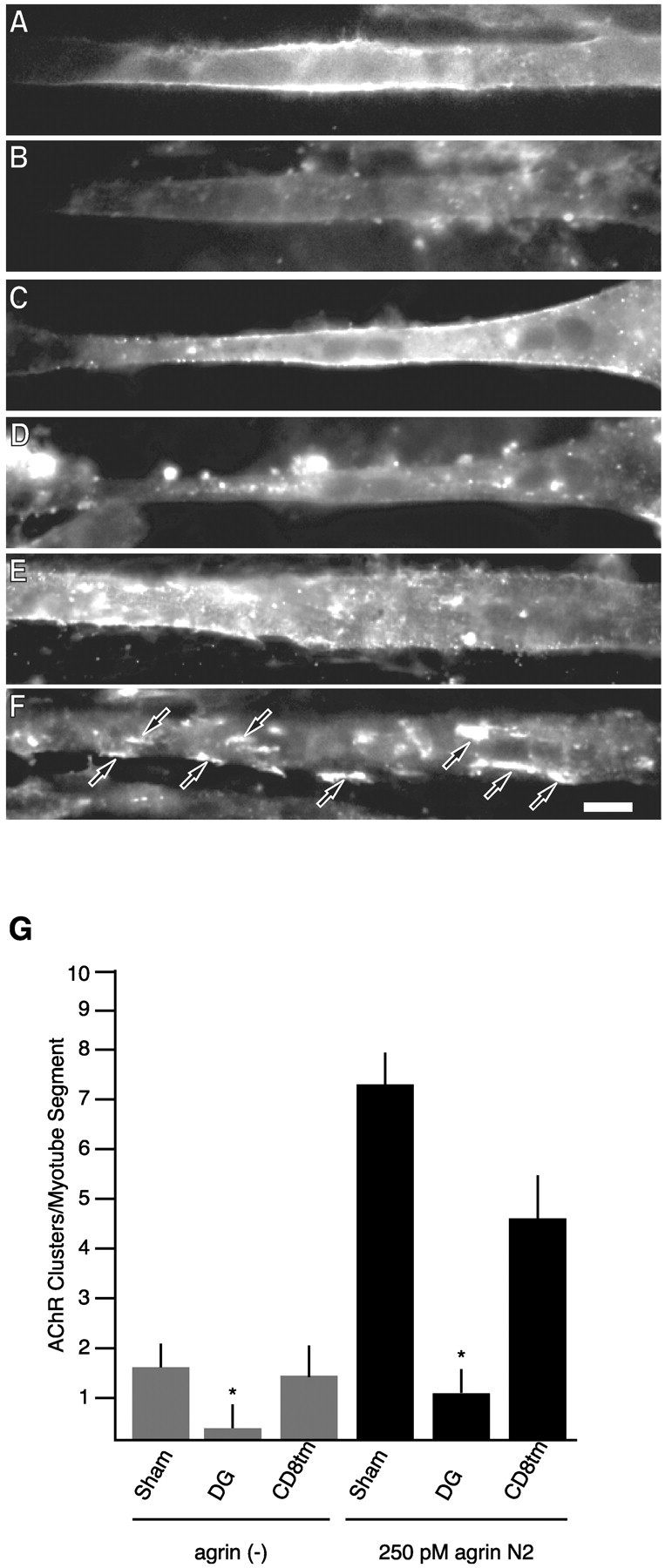Fig. 5.

β-Dystroglycan expression inhibits agrin-induced AChR clustering. Biolistically transfected myotubes were treated for 16 hr with 250 pm agrin N2(4,8). Cells were double-labeled for AChRs (Texas Red-conjugated α-bungarotoxin; B, D, F) and anti-HA immunoreactivity (FITC-conjugated anti-mouse; A, C, E). A, B, A β-dystroglycan-transfected myotube in the absence of agrin. C, D, A β-dystroglycan-transfected myotube challenged with 250 pm agrin N2(4,8). E, F, An agrin-treated CD8tm-transfected myotube. Agrin-induced clusters are apparent in CD8tm (F) myotubes but not in the β-dystroglycan (D) myotube or in the control non-agrin-treated case (B). Arrows indicate AChR clusters. Scale bar, 20 μm. G, Quantification of the effects of exogenously expressed proteins on agrin-induced AChR clustering (mean ± SEM; n= 8). Expression of β-dystroglycan (DG) but not CD8tm inhibits agrin-induced clustering compared with untransfected myotubes. The difference between spontaneous clustering [sham vs DG-transfected myotubes; agrin(−)] is likely caused by experimental manipulations: spontaneous clustering in DG- and CD8tm-transfected myotubes is not statistically different (asterisks indicate that mean values are statistically different from sham; p < 0.05; Student'st test).
